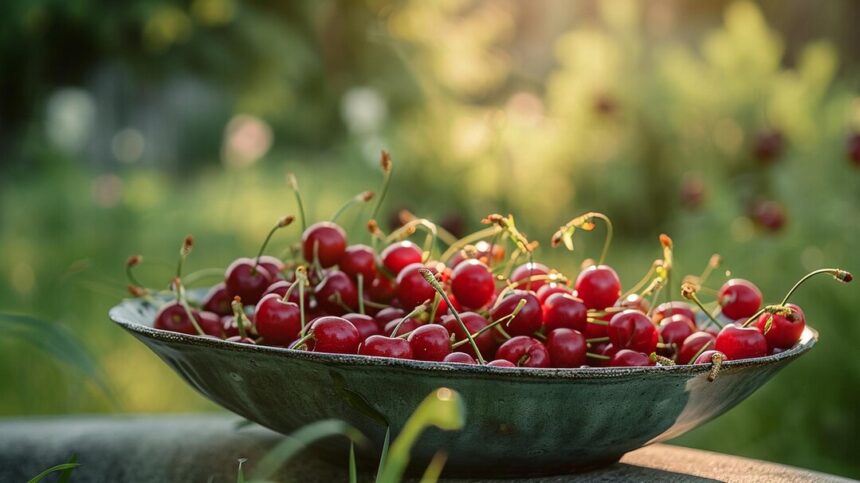Cherries are a prized fruit known for their vibrant color, sweet flavor, and delicate texture, making them a sought-after commodity in both domestic and international markets. In South Africa, the ideal climate and fertile soils provide an excellent opportunity for cherry cultivation. However, achieving high-quality yields requires careful attention to cultivation techniques, pest management, and post-harvest practices. By implementing proven methods and innovative approaches, South African cherry growers can enhance both the quality and yield of their crops, ensuring a thriving industry and premium produce for consumers worldwide. Let’s explore some techniques for optimizing cherry production in South Africa:
1. Selecting Suitable Varieties:
Choosing the right cherry varieties adapted to South Africa’s climate and growing conditions is essential for success. Varieties such as Bing, Sweetheart, and Rainier are well-suited to the country’s diverse regions, offering excellent flavor, color, and yield potential. Conducting thorough research and consulting with agricultural experts can help farmers identify the most suitable varieties for their specific location, soil type, and market preferences.
2. Proper Site Selection and Preparation:
Selecting an optimal site with well-drained soil, ample sunlight, and protection from strong winds is crucial for cherry cultivation. Conduct soil tests to assess nutrient levels and pH balance, and prepare the soil accordingly to create an optimal growing environment. Proper site preparation, including weed control, soil conditioning, and irrigation system installation, lays the foundation for healthy root development and vigorous growth.
3. Irrigation Management:
Maintaining adequate soil moisture is critical for cherry tree health and productivity, especially during the critical stages of flowering, fruit set, and fruit development. Implementing efficient irrigation systems, such as drip or micro-sprinkler irrigation, helps ensure precise water delivery while minimizing water waste. Monitoring soil moisture levels regularly and adjusting irrigation schedules based on weather conditions and plant needs can optimize water use efficiency and support optimal growth and fruit development.
4. Pruning and Training:
Pruning and training cherry trees are essential practices for shaping tree structure, promoting airflow, and maximizing fruit production. Pruning helps remove dead or diseased wood, thin out crowded branches, and encourage fruiting wood development. Proper training techniques, such as open-center or central leader training, can improve light penetration, facilitate fruit ripening, and enhance overall tree health and productivity.
5. Pest and Disease Management:
Effective pest and disease management are critical for protecting cherry orchards from common threats such as cherry fruit fly, aphids, powdery mildew, and brown rot. Implementing integrated pest management (IPM) strategies, including cultural, biological, and chemical control methods, helps minimize pest populations while reducing reliance on pesticides. Regular monitoring, timely intervention, and proper sanitation practices are essential for maintaining orchard health and maximizing yield potential.
6. Netting and Bird Control:
Birds can cause significant damage to cherry crops, leading to reduced yields and lower-quality fruit. Installing bird netting or using scare tactics such as reflective tape or predator decoys can help deter birds and protect cherry orchards from avian pests. Effective bird control measures are essential, especially during the ripening stage when cherries are most vulnerable to bird predation.
7. Thinning and Fruit Management:
Thinning excess fruit from cherry trees helps optimize fruit size, quality, and yield potential while reducing the risk of branch breakage and biennial bearing. Thinning should be performed shortly after fruit set to ensure adequate spacing between fruit clusters and promote uniform fruit development. Additionally, implementing fruit bagging or covering techniques can protect fruit from sunburn and rain damage, further enhancing fruit quality and marketability.
8. Post-Harvest Handling and Cooling:
Proper post-harvest handling and cooling practices are crucial for preserving cherry quality and extending shelf life. Harvesting fruit at the correct maturity stage, handling with care to avoid bruising or damage, and promptly cooling fruit to optimal storage temperatures help maintain flavor, texture, and appearance. Implementing rapid cooling methods such as hydrocooling or forced-air cooling can further prolong fruit freshness and market availability.
9. Continuous Learning and Innovation:
Staying informed about the latest research findings, technological advancements, and industry best practices is essential for ongoing improvement and innovation in cherry cultivation. Participating in educational programs, attending workshops and conferences, and networking with fellow growers and experts can provide valuable insights and inspiration for optimizing orchard management techniques and achieving sustainable growth and profitability.
By implementing these proven techniques and embracing innovation, South African cherry growers can enhance the quality and yield of their crops, ensuring a prosperous future for the industry and delivering premium cherries to domestic and international markets. With careful planning, diligent management, and a commitment to excellence, South Africa’s cherry industry can continue to thrive and contribute to the country’s agricultural success for generations to come.
Join 'Farmers Mag' WhatsApp Channel
Get the latest Farming news and tips delivered straight to your WhatsApp
CLICK HERE TO JOIN






